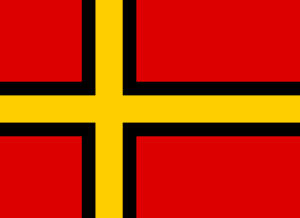Gneisenau Circle: Difference between revisions
| (7 intermediate revisions by the same user not shown) | |||
| Line 1: | Line 1: | ||
The Gneisenau Circle (German: Gneisenau Kreis) is the name the Imperial Gestapo gave to a group of conservative Imperial dissidents centered on the estate of Friedrich Albricht at Franzenplatz, Western Offenbach. It is regarded as the main center of opposition to the Imperial regime. The difficulty for all such dissidents was how to reconcile patriotic loyalty to East Europa with opposition to the Imperials, when the Imperials had subverted the state to such an extent that the two were almost inextricable. | The '''Gneisenau Circle''' (German: Gneisenau Kreis) is the name the Imperial Gestapo gave to a group of conservative Imperial dissidents centered on the estate of Friedrich Albricht at Franzenplatz, Western Offenbach. It is regarded as the main center of opposition to the Imperial regime. The difficulty for all such dissidents was how to reconcile patriotic loyalty to East Europa with opposition to the Imperials, when the Imperials had subverted the state to such an extent that the two were almost inextricable. | ||
[[File:ImperialResistance.png|thumb|right|The Flag of the Imperial Opposition, Also adopted by the Gneisenau Circle.]] | [[File:ImperialResistance.png|thumb|right|The Flag of the Imperial Opposition, Also adopted by the Gneisenau Circle.]] | ||
| Line 6: | Line 6: | ||
==History== | ==History== | ||
The Gneisenau Circle was established in 2015 in response to the demand of several civilians demanding reforms and the return of certain policies and freedoms that were given during the reign of [[Maximillian Georg Gaius von Reginrave|Maximillian II]]. Although largely East Europan and possessing traits which are largely Imperial in nature, the Gneisenau Circle was founded with the purpose of restoring traditional East Europan principles which had been seen during the early 18th and 19th Century. The Gneisenau Circle centres itself on four major themes for its ethos: | |||
* the conduct displayed by members of the military resistance to [[Maximillian I]] and [[Maximillian III]], especially those of [[Claus Schenck Maria von Stauffenberg]]. | |||
* the aims of the military reformers such as [[Reinhard Walkenhorst]], [[Hilde Gertrud Aschelmann]], and [[Aleksandr Suvorov]] | |||
* the uplifting of several ideologies instituted by [[Friedrich Albert III]], [[Wilhelm I]], and [[Maximillian Georg Gaius von Reginrave|Maximillian II]] | |||
* restoring the traditions of old East Europa as was during the reign of [[Maximillian Georg Gaius von Reginrave|Maximillian II]], especially with the [[Eastern Orthodox Church]] | |||
==Allied Cooperation== | ==Allied Cooperation== | ||
Latest revision as of 18:07, 27 August 2022
The Gneisenau Circle (German: Gneisenau Kreis) is the name the Imperial Gestapo gave to a group of conservative Imperial dissidents centered on the estate of Friedrich Albricht at Franzenplatz, Western Offenbach. It is regarded as the main center of opposition to the Imperial regime. The difficulty for all such dissidents was how to reconcile patriotic loyalty to East Europa with opposition to the Imperials, when the Imperials had subverted the state to such an extent that the two were almost inextricable.
Currently, The Gneisenau Circle has more than 75,000 Resistance Fighters across the Imperial Lands with activities including sabotage, espionage, search and rescue and full total cooperation with the Allied nations. The group has also assisted in the 2018 Attempted invasion of the Erebonian Empire.
History
The Gneisenau Circle was established in 2015 in response to the demand of several civilians demanding reforms and the return of certain policies and freedoms that were given during the reign of Maximillian II. Although largely East Europan and possessing traits which are largely Imperial in nature, the Gneisenau Circle was founded with the purpose of restoring traditional East Europan principles which had been seen during the early 18th and 19th Century. The Gneisenau Circle centres itself on four major themes for its ethos:
- the conduct displayed by members of the military resistance to Maximillian I and Maximillian III, especially those of Claus Schenck Maria von Stauffenberg.
- the aims of the military reformers such as Reinhard Walkenhorst, Hilde Gertrud Aschelmann, and Aleksandr Suvorov
- the uplifting of several ideologies instituted by Friedrich Albert III, Wilhelm I, and Maximillian II
- restoring the traditions of old East Europa as was during the reign of Maximillian II, especially with the Eastern Orthodox Church
Allied Cooperation
Allied Contacts
The group also had connections with the Allies through Erebonia since their underground bunker was near the Erebonian Border. Names have included:
- Waldemar Fegelein
- Stefan Farelly
- Erik Englemann
- Carl Regnitz
- Klankain Auchinleck IV
- Ukyo Samonji
- Teletha Testarossa
- Edward 'EJ' Blazkowicz
Known Members
- Friedrich Albricht, Former Generalfeldmarschall of the Imperial Armies and currently the Founder and Marshal of the Gneisenau Circle.
- Felix Claus Gruber, Former General of the Infantry, Co-founder of the Gneisenau Circle and brother to Generalfeldmarschall Heydrich Gruber.
- Erich von Esling, Former Grand Admiral of the Kriegsmarine and one of the Co-founders of the Gneisenau Circle. Close friend of Friedrich Albricht. Joined after his wife, Lili and their 3 children evacuated to Alteria.
- Philipp Claus von Stauffenberg, Former Colonel of the 5th Division and currently serving as the main Allied contact with the Circle.
- Nina Lena von Stauffenberg, Lover and Wife of Philipp Claus von Stauffenberg.
- Caroline Bessler, Intelligence Officer and lover of Yamato Kitagawa
- Johanna Bessler, Younger Sister of Caroline and lover of Felix Claus Gruber.
- Anelie Bessler, Younger Sister of both Caroline and Johanna; Lover of Lucian Officer, Erik Englemann.
- Yamato Kitagawa, Son of Lucian Field Marshal Kiriya Kitagawa. Betrayed the Allies during the Imperial Crisis but became disillusioned by the Eurasianna War. Served as Informant and later defected in 2029.
- Andrea von Kruger, Former Imperial Feldwebel, Seeks redemption against the Imperial government for the death of her parents. Lover of Edward 'EJ' Blazkowicz.
- Matthäus Walkenhorst, Former SS-Standartenführer in Die Totenkopf Unternehmen.
- Natascha Walkenhorst, Former SS-Scharführerin and Rapportführerin der Unternehmen.
